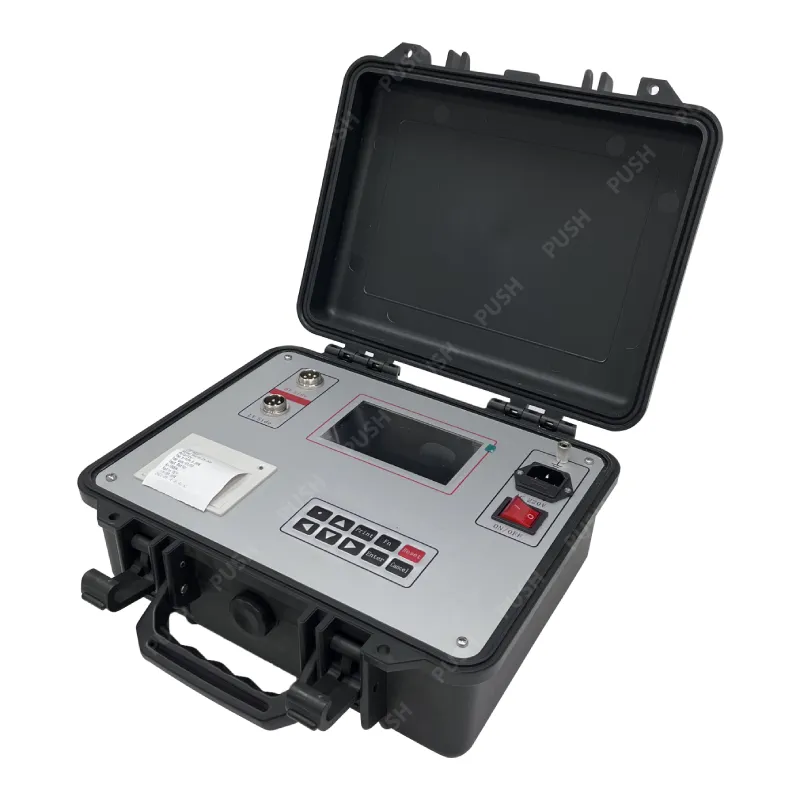 English
English


hipot test standard
Understanding Hipot Test Standards Ensuring Electrical Safety
The hipot test, short for high potential test, is a critical procedure used to assess the electrical insulation of devices, components, and systems. It helps ensure that products are safe for use by identifying any potential insulation failures that could lead to electrical shock hazards or equipment damage. The hipot test standards provide guidelines and protocols that manufacturers must follow to maintain safety and reliability in their products.
Purpose of the Hipot Test
The primary purpose of the hipot test is to verify the integrity of electrical insulation. When electrical devices are used in the field, they are subjected to various environmental conditions that may compromise their insulation over time. The test subjects the device to a voltage substantially higher than its normal operating voltage to determine if the insulation can withstand such stresses without breaking down. By exposing the insulation to this higher voltage for a specified duration, manufacturers can identify weaknesses before the product is put into service.
Types of Hipot Tests
There are generally three types of hipot tests
1. Dielectric Withstanding Test This test applies an AC or DC voltage to the insulation for a brief period, typically between 1 to 60 seconds. It checks for any breakdown or leakage current during the test duration.
2. Equipment Leakage Current Test This test measures the current that leaks through the insulation when subjected to a specified voltage. The acceptable leakage current levels are defined by various standards, ensuring the device operates safely under normal conditions.
3. Insulation Resistance Test This assessment evaluates the resistance of the insulation material when subjected to a specific voltage, usually 500V or higher. Low insulation resistance readings can indicate potential failures.
Standards Guiding Hipot Testing
Various organizations establish standards for hipot testing to ensure consistency and reliability across industries
. Some of the prominent standards include- IEC 60950 and IEC 62368 These standards provide safety requirements for information technology equipment and audio/video equipment, respectively. They outline testing requirements to demonstrate that products can withstand specific voltages and environmental conditions.
hipot test standard

- UL 60950 This Underwriters Laboratories standard complements the IEC standards and focuses on safety aspects for IT devices, including the necessity of performing hipot tests.
- ANSI/ISA 12.12.01 Focused on electrical equipment for use in hazardous locations, this standard emphasizes testing protocols to prevent ignition sources in volatile environments.
Implementing Hipot Testing
For manufacturers, implementing an effective hipot testing program involves several key steps
1. Device Preparation Ensure the device is properly prepared for testing, including disconnecting power sources and ensuring all components are free from external factors that could influence the test.
2. Selection of Test Parameters Choose the appropriate voltage and testing duration based on product specifications and relevant standards.
3. Conducting the Test Use calibrated equipment to perform the test according to the established protocols, recording all relevant data for review.
4. Analyzing Results Analyze the results to determine pass/fail criteria, and document any findings. Non-conformance may require further investigation and possible design alterations.
5. Continuous Improvement Based on test results and feedback, continually improve the testing processes to enhance product safety and reliability.
Conclusion
The hipot test is a crucial part of the quality control process in the manufacturing of electrical equipment. Adhering to established hipot test standards not only ensures compliance with regulatory requirements but also plays a fundamental role in protecting users from electrical hazards. As technology advances and the demand for higher safety standards increases, the importance of rigorous hipot testing will only grow, reinforcing the need for continued innovation and diligence in electrical safety practices.
-
Differences between open cup flash point tester and closed cup flash point testerNewsOct.31,2024
-
The Reliable Load Tap ChangerNewsOct.23,2024
-
The Essential Guide to Hipot TestersNewsOct.23,2024
-
The Digital Insulation TesterNewsOct.23,2024
-
The Best Earth Loop Impedance Tester for SaleNewsOct.23,2024
-
Tan Delta Tester--The Essential Tool for Electrical Insulation TestingNewsOct.23,2024





